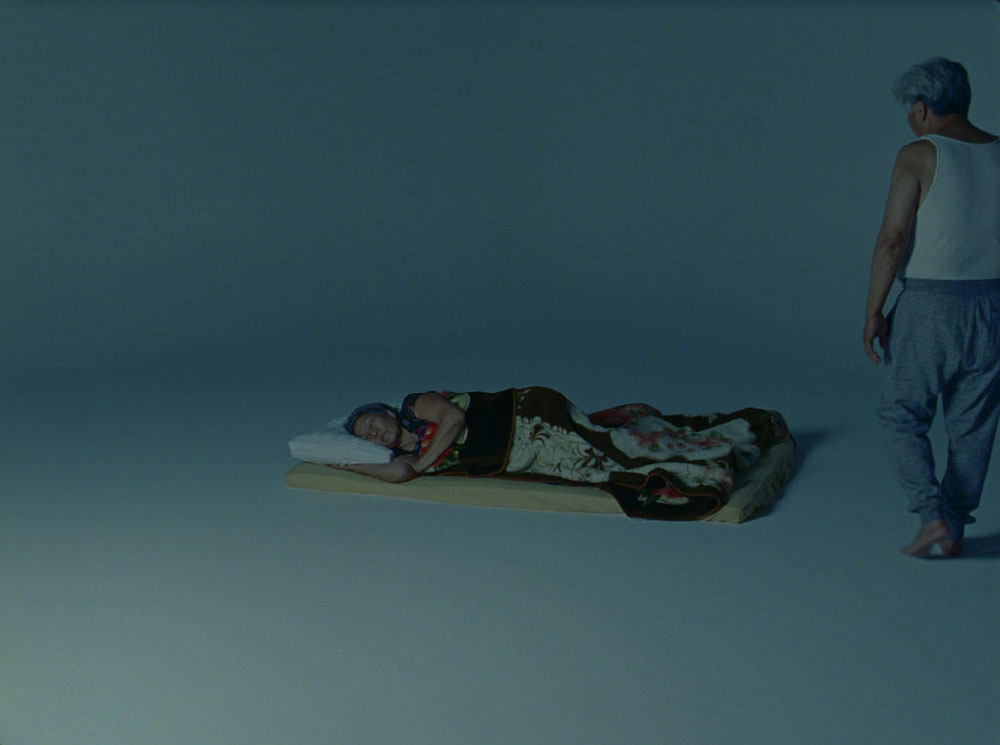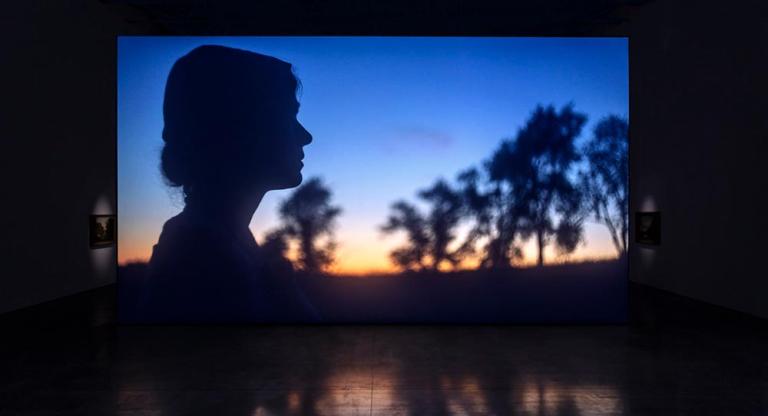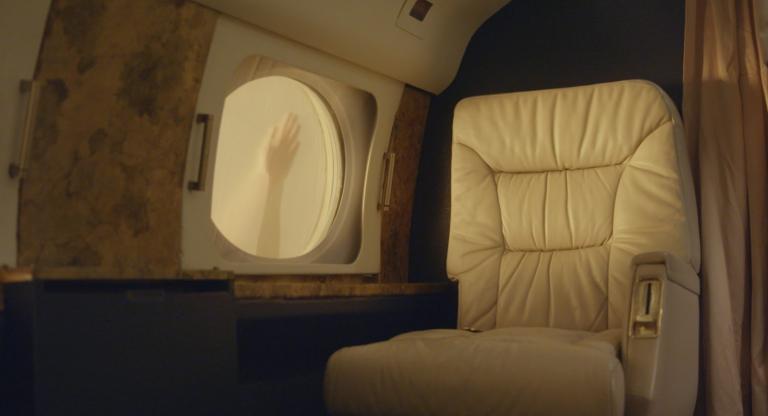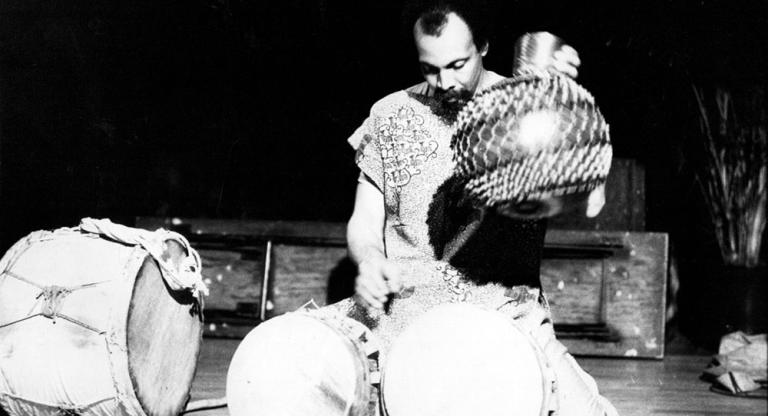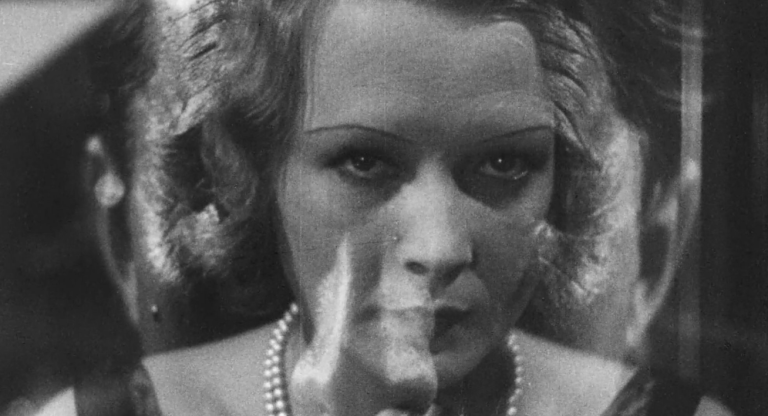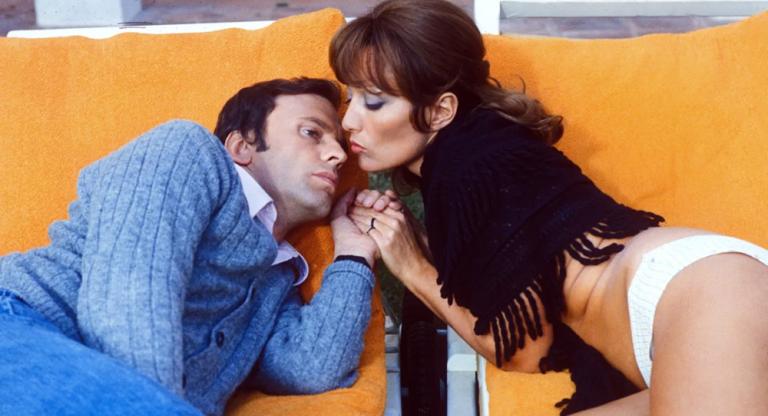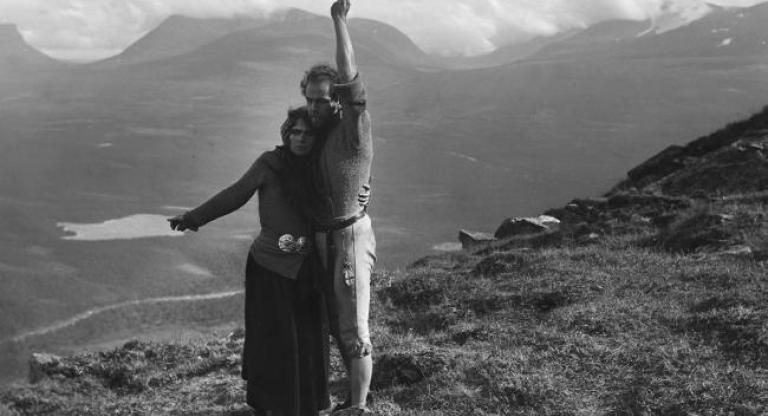In Tenzin Phuntsog’s Pala Amala (Father Mother) (2022), a tight shot steadies on a pair of bare arms that cross the frame. Through the camera, Phuntsog watches as his father runs sandy hands over forearms and wrists, as if exfoliating his skin. They’re at the edge of the ocean, a sunny beach in California. The layers and sneakers worn by Phuntsog’s protagonists (his parents) suggest a cooler day. They are not here to swim, but to visit a feeling.
In an online artist’s talk hosted by Microscope Gallery, Phuntsog told a story his father told him: unable to return for many years, when he finally visited Tibet, he bent to rub the earth on his body. He did this without premeditation, a sudden urge to feel the dirt on his skin. That was in the ’90s, during a brief window of time in which it was more possible for people born in Tibet to reenter. Experiences of exile and displacement among the Tibetan diaspora frame the six films and videos that make up Tenzin Phuntsog’s exhibition, Pure Land. It has not been possible for Phuntsog to enter Tibet himself. Since his visa application has been repeatedly denied, Phuntsog endeavors to visit his ancestral home through video, through family, and through acts of personal filmmaking and performance that dwell in possibilities for connection through memory, dreams, and land. How does dreaming, in exile, remake the land?
In Pala Amala (Father Mother) and Dreams (2022), Phuntsog films his parents, producing images that are surprising, slow, and immediate in their apparent comfort. Phuntsog’s affecting camera handling matches his parents’ on-screen presence. In the show’s titular film, Pure Land (2022), he films a friend who plays a version of the artist: a Tibetan American man photographing the high plateaus in Blackfeet territory (Montana) in search of a resemblance to the landscapes of Tibet. Sending photos to his Tibetan-born mother, he asks her what they make her feel. He attempts to visit her feeling.
Phuntsog’s title plays on the Buddhist concept of Pure Land, a place unimaginable in human life, but that may be right in front of you. Phuntsog extends this concept to describe his experience: what is your relationship to a place only knowable through the work of imagining? Another line of interpretation emerges from Phuntsog’s acknowledgment of Blackfeet land: what does it mean to think of purity while on land that holds five hundred years of Native genocide and resistance?
Pala Amala (Father Mother), Dreams, and Pure Land are shot on 35mm film with minimal editing. Running between two and fifteen minutes, his films are the result of ten years of preparation. Accompanying these projections are three sculptural video works: screens custom built to match the size and vertical orientation of a mobile phone, fitted within brass and jade containers that reference Tibetan Gau prayer boxes. Installed on plinths across the gallery, each monitor loops videos one or two minutes in length, documents of daily life sent by relatives in Tibet through WeChat. Phuntsog came into this archive of home movies through his mother, learning about them only after the US banned WeChat for a period between 2020 and 2021. How does dreaming remake family? An older relative feeds yaks summer grasses. A younger relative dances.
Tenzin Phuntsog: Pure Land runs through April 9 at Microscope Gallery.
